Sprouting & microgreens - introduction
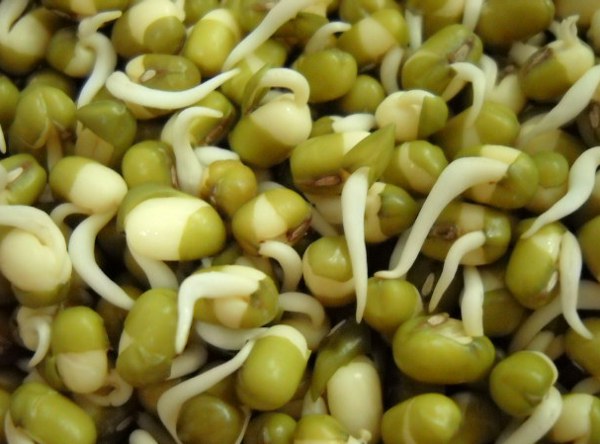
“If you eat fresh foods that have a living energy, the food returns that living energy.” – Simon Brown
Contents
What are sprouting & microgreens?
Sprouting is a process whereby an edible plant seed is awakened from its dormant state by soaking in water for a specified time, then allowed to ‘sprout’ and grow to a small size, when it can be consumed, usually raw and sometimes cooked, depending on the seed (see below). Seeds used for sprouting include vegetables, beans, pulses, grains and nuts. The most familiar include the crisp, inch-long alfalfa sprouts found in salads and sandwiches; the longer, noodle-like mung bean sprouts in chop suey; or the malt flavour extracted from sprouting barley.

Here’s more on the terms used in this type of ‘micro-gardening’:
- seeds are sprouted, then eaten whole, including primary leaves, stem and root
- beans, pulses and grains are germinated and eaten whole, including bean and root
- microgreens are micro-plants grown from seeds on a growing medium, and cut at the base when tiny; stem and primary leaves are eaten
- plant shoots are seeds or pulses grown on a growing medium; they are cut at the base for leaves and stems to be eaten, but not roots; usually a bit bigger than microgreens when harvested
- grasses are grains grown on a growing medium; only the blades are harvested for juicing
- nuts are soaked, and the whole soaked nut is consumed with or without skin; it’s called sprouting although no visible sprout will appear
- many seeds can be either sprouted or grown into microgreens – such as radish, alfalfa, mustard, cabbage, broccoli and clover
- mucilaginous (sticky) seeds can only be used for microgreens – such as cress, basil, rocket or chia

Soaking and sprouting times vary depending on the type and size of seed. There are certain things that sprouts need to ensure steady growth, the main ones being humidity and air circulation. Some seeds require a dark environment, some light, and others require first darkness, then light in the final stages. Sprouting is a soil-less growing method, but a good-quality growing soil or compost can be used when growing microgreens, plant shoots or grasses. However, these can all be grown without soil – see ‘what can I do?’.
The result is crunchy, flavoursome sprouts; fresh, germinated beans; milky-tasting sprouted nuts; herb-like microgreens; plump, leafy plant shoots; and lush grasses for juicing.

What are the benefits of sprouting & microgreens?
Dry, dormant beans, grains and seeds often contain three things that make them indigestible for humans – enzyme inhibitors, phytic acid (which prevents the absorption of many essential minerals) and a range of mild toxins that discourage animals from eating them. They only became part of our diet after the development of agriculture, and we’re not really equipped to eat them unprocessed. However, soaking and sprouting neutralises enzyme inhibitors, phytic acid and toxins, intensifies vitamins and nutrients and renders them edible when raw.
Make an easy sprouter and start sprouting.
Sprouts are considered among the healthiest of foods, with detoxifying and rejuvenating properties that help your body repair itself; and yet they can be produced cheaply, easily and quickly. We all need fresh, plant-based food sources to maintain optimal health, and sprouts are packed with vitamins, amino-acids, beneficial enzymes, minerals, proteins, phytonutrients and trace elements that are all easily digested and absorbed by the body.
Growing sprouts only requires a small amount of space and very basic equipment. What it doesn’t require is a particular season, fertilisers or lots of hard work and time. Sprouts are therefore a good way to get kids interested in growing veg.

Fresh sprouts are very versatile – they can be eaten raw in salads and sandwiches, juiced and added to smoothies or soups, used as a garnish or just nibbled whenever you feel like it.
Home-grown sprouts are much cheaper than the ready-sprouted seeds in plastic bags that you can buy in the shops – and you know how exactly how they were grown and what’s in them.

What can I do?
Some sprouted seeds are odourless and some have a strong herbal scent. The nutritional value of some sprouts is so high that it’s recommended that they be used only sparingly (e.g. fenugreek or nigella). Some beans can contain toxins even after sprouting, so either don’t sprout them at all or steam them before eating (e.g. red kidney beans). Always refer to a reliable sprouting chart, and do some research online and/or with good books – or you can ask questions in the comments section below if you’re not sure. Seeds suitable for sprouting are listed here.

Sprouting is an extraordinarily simple process. Almost all seeds need to be soaked in water for 4 to 24 hours before sprouting. The soaking will not only make the seed plump but also triggers changes within the seed. Self-protective ‘anti-nutrients’ are released into the soaking water and the inedible, hard seed will slowly start its inner transformation to a ‘superfood’.
After initial soaking (follow a soaking chart), the seed is left in and airy but humid place for sprouting. Once the sprouts reach the desired length, they’re harvested for consumption.
For growing sprouts you will need seeds, sprouter and a water supply for regular rinsing.

Make your own sprouter
You can make yourself a basic sprouting device from a glass jar or a plastic food container (we advise against plastic in principle, but upcycling a plastic container from a yoghurt pot, for example, will increase its lifespan).
Glass-jar sprouter: there are plenty of online guides (like this one). We don’t recommend piercing a metal lid due to the dangers of sharp edges and possible rust. A cheesecloth attached with a rubber band to the neck of the glass jar will create a simple sprouter. You will also need some sort of base which will hold your sprouter upside-down or tilted for drainage once you start rinsing the sprouts.

Plastic-pot sprouter: take a 500g plastic yoghurt pot or something similar, including the lid. Make drainage holes in the bottom of the pot (from the inside) with the biggest needle from your sewing kit. The holes should be smaller than the smallest seeds you intend to sprout. Put a handful of soaked seeds inside, rinse them well and drain them by putting the lid on and gently squeezing the pot until the water drains out through the holes. Rinse and drain each morning and evening. See here for how this can help prevent seeds from rotting.
Two easy ways to grow broccoli microgreens – with or without soil.
Buying a sprouter
There are many different kinds of sprouters available. Plastic sprouters are common, and easy to clean, but plastic is a bit of an environmental nightmare. Glass sprouters often have plastic lids, but you can easily make one with a cheesecloth lid. Ceramic sprouters are both natural and efficient, although there are various grades of fired clay depending on the firing temperature, and not all of them are suitable. Avoid Stoneware and glazed sprouters because they prevent air circulation. The best are earthenware or terracotta. They’re natural, beautiful and porous – so they imitate natural soil conditions for the seeds, and they absorb and release moisture, but are breathable, which prevents condensation.

Growing and cooking sprouts and microgreens
See here for sprouting instructions.
See here for instructions using an earthenware sprouter.
Note that cooking destroys a lot of nutritionally-important enzymes, vitamins and amino-acids. Most sprouts are safe to eat raw – even mung beans and lentils; the only things that definitely need cooking are the bigger beans such as soy, azuki and red kidney beans.
Microgreens are even easier to grow. Sow seeds in a porous / earthenware dish lined with a moist table napkin, covered with a lid that allows air circulation. Organic potting compost in a shallow tray with drainage holes can be used as the medium too, but this increases the risk of contamination. Soil or compost is only required for grasses or shoots that have more than just primary leaves. Put the container on a sunny window ledge and keep moist. Expect the greens to germinate in 3-7 days, and then 1-2 weeks later (depending on the green), you can harvest them by snipping them off above soil level with scissors.

‘Micro’ is often best soil-less and raw; however….
Important:
- Alfalfa sprouts are mildly toxic and shouldn’t be eaten every day; avoid them altogether if you’re ill.
- It’s best to eat sprouts in moderation and to vary the types of sprouts you eat.
- Bigger bean sprouts such as soy and red kidney bean are toxic when raw.
- Many raw bean sprouts contain hemagglutinins (which inhibit protein and fat absorption), but cooking destroys hemagglutinins; best to cook the bigger germinated beans.
Specialist(s)
Thanks to Lucia Kostelnik of Gaia Sprouters for information.
The specialist(s) below will respond to queries on this topic. Please comment in the box at the bottom of the page.

Lucia Kostelnik is a creator and environmentalist. She is professionally involved in growing edible greens such as sprouts, microgreens, plant shoots and grasses for research and further education. Lucia has over 15 years experience in sprouting and in 2012 she developed her own range of sprout-growing devices made of earthenware – GAIA Sprouters.

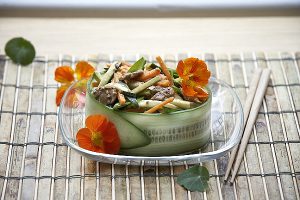
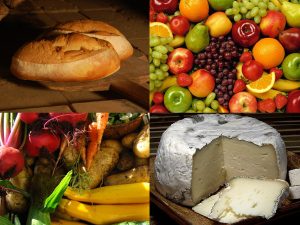
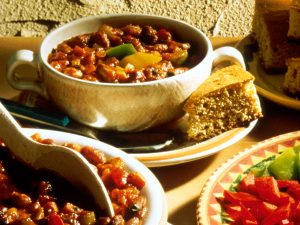
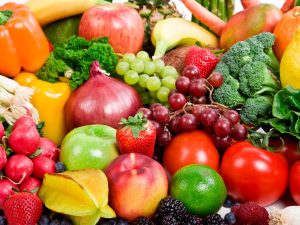
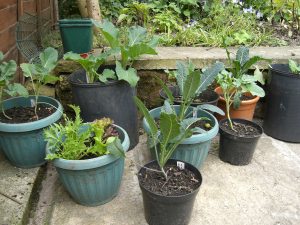
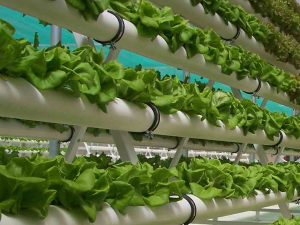
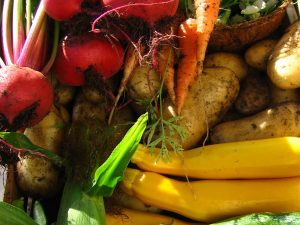
10 Comments
hello. my name is levi. i have recently grown some wheat grass. this is my 1st time doing this. my grass is about 7 inches tall and looks great. however
there looks to be cobwebs at the bottem of the blades of grass. right above the soil at the bottem of the wheatgrass. these cob webbs looks like tiny webbings with little tiny white dots all over them.
is this stuff mould? is this a bad batch? can i cut the grass above the webbs or can i wash them off. any advice would be great. thanks! 1st time here. i hope i wrote this in the write spot.
Thank You
Reply to: Slaughter 49er
Hi Levi. It is not easy to advise without photo evidence but let me please guess what has happened in your situation and suggest some solutions. I believe you have planted your soaked wheat grains into a thin layer of potting soil in a tray that grows wheat-grass indoors. The potting soil from garden centres has undergone heat or chemical processing to kill any pathogens and seeds that are in it. Unfortunately the sterilising process strips the potting soil of most of its natural bacteria and fungi. So when you sow your grains in it you also introduced a few air-borne spores of the most common mould and other ‘live’ compounds. The soil experiences a sort of bio-shock and is taken over by the strongest strain thriving in the particular environment of your wheat-grass tray. It may take a while until the soil balances itself out but unfortunately the mould will already be in contact with the wheat grass blades, which is undesirable. Mould does not grow on healthy grass but because you will later juice the grass and drink it raw (unpasteurised) you will drink part of that mould and its spores. Now, we are surrounded by spores of various fungi all the time, and cannot prevent their intake either by breathing or digesting. The question is the amount. They are not normally our food source and consumption should be avoided.
Solutions:
-You can try to use ordinary top soil from the garden. Negatives: This soil may come with weed seeds, bugs and earth worms that are not desirable indoors.
-You can sow your grains outdoors in a raised bed with a prepared mixture of compost and soil. Negatives: You may not have an outdoor space. The wheat grass grown outdoors may be exposed to pollutants etc.
-You can grow your wheat grass without the soil, preferably on a sterile bedding of some kind – coir matting, breathable ceramic tray. Negatives: The grass takes longer to grow compared to other seed sprouts and therefore requires more nutrients and nitrogen that can’t be provided by a plain growing base. Yield is not as good.
We have recorded a YouTube video of what healthy (barley or wheat) grass for juicing should look like. You will find it here http://www.youtube.com/watch?v=XhBL_KGTSdc This grass was grown outdoors on a prepared raised bed. The soil in the bed was connected with the ground below, fertilised with sustainable, vermiculture fertiliser, watered with plain water and exposed to dew, sun, wind and nature.
I hope this helps. Please ask if you need further advice. Thank you for your query. Lucia Kostelnik
Interesting info! “Many raw bean sprouts contain hemagglutinins (which inhibit protein and fat absorption), but cooking destroys hemagglutinins; best to cook the bigger germinated beans.”
What ones do not have Hemagglutinins? Or what about microgreens instead of sprouts? Do the microgreens still have hemagglutinins?
Thank you!
Reply to: Joni.
Hi Joni and thank you for your question. Seeds and beans in dormant stage – when they are dry – will try to protect themselves from being eaten. To make them less digestible is one of the means of protection. The protection ‘layer’ can be washed off with soaking in water and rinsing the seeds – the protective chemicals in skins/hulls will be released to soaking water. But, this is not always the case with bigger types of seeds and beans which will retain some indigestible compounds even after sprouting. Therefore bigger beans, like red kidney beans, need to be heat-processed after sprouting to neutralize them.
The beans that are safe to sprout and eat raw are: mung (mungo) beans, adzuki (aduki) beans, moth beans, but also pulses like lentils and smaller type of chickpeas. You should always check the seeds you wish to sprout as there are plenty that are suitable but also many that are not. it is advisable to always follow reliable sprouting seeds chart.
Many seeds and beans can be grown into microgreens and plant shoots. Yet again, it is good to check a reliable guide before trying something new. Tasty and safe plant shoots are mung bean shoots, pea shoots, buckwheat lettuce, or sunflower shoots as they are still tender and palatable. Other baby plants can be too fibrous, difficult to chew on or not suitable for human consumption.
Reply to Informatika: Edible seeds that grow into sprouts can be harvested in various stages. If the sprouts grew healthy and they are not affected by mold or rot, they can be consumed from the point they grow a little tail – the root up to the point they fully developed their primary leaves. Each sprouted seed, bean, grain, nut or pulses are harvested in different stage and we recommend to do further research on appearance of the sprout that is ready for consumption. Sprouting in average varies from 2 days to 10 days. If growing plant shoots, grasses or buckwheat lettuce then even longer. Some seeds can be only sprouted, which takes shorter time, or they can be grown into microgreens, which will then take longer (for example Alfalfa). The best is to experiment with length of sprouting to settle on the most desirable results.
Hello Lucia,
looking for some guidance. I have purchased a clay seed sprouting tray but there are no holes for draining. Not quite sure how to rinse daily with this setup. Thoughts? Thx in advance 😊 🌱
nicola
Replying to Nicola:
Hi Nicola,
If you purchased a sprouting trays made out of unglazed porous earthenware or terracotta WITHOUT the drainage holes it means that this dish is intended for growing microgreens out of mucilaginous seeds like Cress or Chia. You then don’t rinse them like regular sprouts but you just mist them with a gentle spray of water. Eventually you can place the clay dish into a bigger glazed plate and keep a certain level of water in the plate so the clay dish can pull in as much as it can and supply it to the seeds from below.
I hope that explains. I wonder if sprouting instructions were not supplied with your sprouting tray…
Please ask if further help is needed.
Lucia, thank you so much for the response. That makes sense. I’m fairly new to sprouting and liked the idea of the clay. I’ll keep these for the mucilaginous seeds/microgreens. The tray instructions did say to spray but didn’t state what should be grown in them. Thanks for the clarity 😊 🌱
Nicola
No problem Nicola. We are here to help.
What an insightful introduction to sprouting and microgreens! I truly appreciate how clearly you’ve laid out the basics—this is going to be so helpful as I dive deeper into this area. I’ve seen similar valuable content on http://www.urbangardenguides.com, which I highly recommend checking out if you’re interested in more tips and tricks. Keep up the great work!